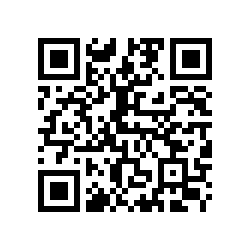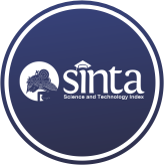Pola Arsitektur Enterprise Untuk Platform Investasi Bersama
(1) Universitas Islam Indonesia, Indonesia
(2) Universitas Islam Indonesia, Indonesia
(*) Corresponding Author
Abstract
Full Text:
PDFReferences
R. D. Pambudi, “Perkembangan Fintech Di Kalangan Mahasiswa Uin Walisongo,” Vol. 4, No. 2, Pp. 74–81, 2019.
M. Ansori, “Perkembangan Dan Dampak Financial Technology (Fintech) Terhadap Industri Keuangan Syariah Di Jawa Tengah,” 2019.
R. Malaga, S. Mamonov, And J. Rosenblum, “Gender Difference In Equity Crowdfunding: An Exploratory Analysis,” Int. J. Gend. Entrep., Vol. 10, No. 4, Pp. 332–343, 2018, Doi: 10.1108/Ijge-03-2018-0020.
P. Belleflamme, T. Lambert, And A. Schwienbacher, “Crowdfunding: Tapping The Right Crowd,” J. Bus. Ventur., Vol. 29, No. 5, Pp. 585–609, 2014, Doi: 10.1016/J.Jbusvent.2013.07.003.
Aludi, “Anggota Aludi,” 2022. Https://Aludi.Id/Index.Php/Core_Home/Selengkapnya_Anggota (Accessed Sep. 01, 2022).
J. Hemer, “A Snapshot On Crowdfunding,” Enconstor, P. 39, 2011.
M. M. Lankhorst, P. H. W. M. O. Luttighuis, And T. Instituut, “Enterprise Architecture Patterns For Multichannel Management,” Pp. 31–42, 2009.
T. Perroud And R. Inversini, Enterprise Architecture Pattern. 2013.
R. Yunis And K. Surendro, “Model Enterprise Architecture Untuk Perguruan,” Konsep Dasar Sist. Inf., Vol. 2009, No. Semnasif, Pp. 72–79, 2009.
T. Tamm, P. B. Seddon, G. Shanks, And P. Reynolds, “How Does Enterprise Architecture Add Value To Organisations?,” Commun. Assoc. Inf. Syst., Vol. 28, No. 1, Pp. 141–168, 2011, Doi: 10.17705/1cais.02810.
M. Taleb And O. Cherkaoui, “Pattern-Oriented Approach For Enterprise Architecture: Togaf Framework,” Des. Enterp. Archit. Fram. Integr. Bus. Process. With It Infrastruct., Vol. 2012, No. January, Pp. 99–113, 2016, Doi: 10.4236/Jsea.2012.51008.
B. Appleton, “Patterns And Software: Essential Concepts And Terminology,” 2000. Http://Www.Bradapp.Com/Docs/Patterns-Intro.Html (Accessed Sep. 23, 2022).
B. D. Rouhani, M. N. Z. R. Mahrin, F. Nikpay, R. B. Ahmad, And P. Nikfard, “A Systematic Literature Review On Enterprise Architecture Implementation Methodologies,” Inf. Softw. Technol., Vol. 62, No. 1, Pp. 1–20, 2015, Doi: 10.1016/J.Infsof.2015.01.012.
R. Cloutier And D. Verma, “Applying Pattern Concepts To Enterprise Architecture,” J. Enterp. Archit., Vol. 2, Pp. 34–50, 2006, [Online]. Available: Notes://Owwi2a/C1257075002336cc/($Uid)/C125749b0043bdf1c12574a2004129c4?Journal Article.
García-Escallón, R. Rafael, And A. Aldea, “On Enterprise Architecture Patterns: A Systematic Literature Review,” In Iceis 2020 - Proceedings Of The 22nd International Conference On Enterprise Information Systems, Vol. 2, No. May, 2020, Pp. 666–678.
T. Dirgahayu, “A Framework For Implementing Enterprise Architecture Patterns As Microservices,” 2021.
Latifah, R. T. Dirgahayu, And H. Prihantoro, “Potret Pemanfaatan Architecture Enterprise Perguruan Tinggi Di Indonesia,” Vol. 10, No. 1, Pp. 57–65, 2017.
C. Alexander, A Pattern Language (Oxford University Press). Oxford University Press, 1977.
N. B. Harrison And P. Avgeriou, “Leveraging Architecture Patterns To Satisfy Quality Attributes,” Lect. Notes Comput. Sci. (Including Subser. Lect. Notes Artif. Intell. Lect. Notes Bioinformatics), Vol. 4758 Lncs, Pp. 263–270, 2007, Doi: 10.1007/978-3-540-75132-8_21.
M. Krisper And A. Saˇ, “The Journal Of Systems And Software Enterprise Architecture Patterns For Business Process Support Analysis,” J. Syst. Softw., Vol. 84, No. 9, Pp. 1480–1506, 2011, Doi: 10.1016/J.Jss.2011.02.043.
K. A. Sespiani, M. Apilia, And S. Miftajanna, “Studi Literatur Pelaksanaan Crowdfunding Oleh Public Figure Melalui Platform Kitabisa . Com,” J. Ilmu Komun. Dan Media Sos., Vol. 1, No. 2, Pp. 84–96, 2021.
P. R. Chelliah, H. S. J, A. Murali, And D. K. N, Architectural Patterns : Uncover Essential Patterns In The Most Indispensable Realm Of Enterprise Architecture. 2017.
O. Barros And C. Julio, “Enterprise And Process Architecture Patterns,” Bus. Process Manag. J., Vol. 17, No. 4, Pp. 598–618, 2011, Doi: 10.1108/14637151111149447.
E. Borgia, “The Internet Of Things Vision: Key Features, Applications And Open Issues,” Comput. Commun., Vol. 54, Pp. 1–31, 2014, Doi: 10.1016/J.Comcom.2014.09.008.
K. Seemanthini And S. S. Manjunath, “Human Detection And Tracking Using Hog For Action Recognition,” Procedia Comput. Sci., Vol. 132, No. Iccids, Pp. 1317–1326, 2018, Doi: 10.1016/J.Procs.2018.05.048.
K. Hägglund, “The Smart Home Revolution.,” Appl. Des., Vol. 63, No. 1, Pp. 16–19, 2015.
DOI: https://doi.org/10.30645/kesatria.v5i1.319
DOI (PDF): https://doi.org/10.30645/kesatria.v5i1.319.g316
Refbacks
- There are currently no refbacks.
Published Papers Indexed/Abstracted By:














